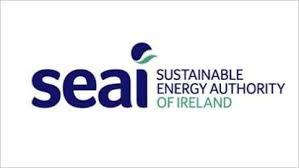
Date: 05 Jan 2023
Updated version now available and new user training in January
A new version (v3.10) of SEAI’s gap-to-target (GTT) model is now available via the M&R system. The latest version includes several additional charts that display greenhouse gas (GHG) emissions and targets. The worksheets have also been reordered so the GHG / decarbonisation functionality appears first. The User Guide has also been updated to reflect the changes to the model.
The gap-to-target model (GTT model) is a spreadsheet model for use by public bodies to evaluate their energy efficiency (EE) performance and energy-related greenhouse gas (GHG) emissions over time, in accordance with SEAI’s public sector energy monitoring and reporting framework for the period to 2030 (M&R-2030).
The GTT model can be used to:
- Model the impact of changes to historical values for your existing activity metrics on your organisation’s historical energy performance.
- Create new simple activity metrics, enter historical values for same and model the impact on your historical energy performance.
- Create new composite activity metrics, enter historical values for same and model the impact on your historical energy performance.
- Model the impact of different activity metric choices on your organisation’s future energy performance.
- Model your gap to the 2030 energy efficiency target on a business-as-usual (BAU) basis.
- Model the impact of implementing energy-saving projects on your gap to the 2030 energy efficiency target.
- Review your organisation’s GHGs since its energy efficiency baseline and since its GHG baseline.
- Calculate your 2030 GHG targets.
- Model your gap to the 2030 GHG targets, from historical and current GHG levels.
- Model future GHG emissions pathways, incorporating decarbonisation initiatives and anticipated supply-side gains from electricity system decarbonisation and biofuel blending.
The principles, methodologies and rules for M&R-2030 are set out in the latest version of SEAI’s M&R-2030 methodology guidance document, which is available from the SEAI website. The methodologies and calculations embedded in the GTT model are based on those developed for, and incorporated in, the M&R system. Like all calculation models, the results (outputs) generated by the model are entirely dependent on the inputs entered by the user, and on certain simplifying assumptions.
New user training
SEAI provides a number of new user training sessions at the start of every reporting cycle. The new user workshops are aimed at those who are new to or not very familiar with the M&R system. They comprise hands-on, practical step by step guidance on how to use the M&R system and complete your reporting requirements.
Our next training workshops will be held online on the following dates in January 2023.
You can register your interest through the links provided on the SEAI Website:
Workshop 1 Tue, 10th Jan: 9:30 am – 12:30 pm
Workshop 2 Thu, 12th Jan: 9:30 am – 12:30 pm
Workshop 3 Tue, 17th Jan: 9:30 am – 12:30 pm
Workshop 4 Wed, 18th Jan: 9:30 am – 12:30 pm